More Praise for
Meditation and Relaxation in Plain English
This book speaks to the reader in clear language and a warm voice. It is a good and friendly introduction for exploring the landscape of the inner life.
Dr. Jeff Brantley, author of Calming Your Anxious Mind
The book does a particularly good job of conveying the spirit, depth, and promise of meditation in a way that is accessible to those raised in Western cultures. The progression of practice instruction from focus on the breath, to cultivating a good heart and transforming difficult situations, provides a powerful step-by-step guide to meaningful meditative practice with a range of options available so readers can individualize their own practice. This book will be particularly useful for new practitioners and those interested in teaching meditative practice to others in clinical and other settings, although it will also help refresh and renew those with a more established practice.
Professor Lizabeth Roemer, co-editor of Mindfulness and Acceptance-Based Treatments of Anxiety
Theres a very large and growing body of scientific research on the medical and psychological benefits of relaxation exercises and meditation. Until now, though, its been difficult to find a clear, accessible book that introduces readers to the whole range of exercises from this inner science of training the mind. Sharples book provides clear, practical, understandable guidance to methods for physical relaxation, training attention, increasing mindfulness, visualization, healing meditations, and increasing positive emotions.
Lorne Ladner, author of The Lost Art of Compassion
publishers acknowledgment
The publisher gratefully acknowledges the generous help of the Hershey Family Foundation in sponsoring the printing of this book.

Wisdom Publications, Inc.
199 Elm Street
Somerville MA 02144 USA
www.wisdompubs.org
Wisdom edition 2006 Bob Sharples
All rights reserved.
No part of this book may be reproduced in any form or by any means, electronic or mechanical, including photography, recording, or by any information storage and retrieval system or technologies now known or later developed, without permission in writing from the publisher.
Library of Congress Cataloging-in-Publication Data
Sharples, Bob, 1944-
Meditation and relaxation in plain English / Bob Sharples.1st Wisdom ed.
p. cm.
Includes bibliographical references and index.
ISBN 0861712862 (pbk. : alk. paper)
1. Meditation. I. Title.
BF637.M4S52 2006
158.12dc22
2005036442
ISBN 0861712862
First Wisdom Edition
09 08 07 06 06
5 4 3 2 1
Cover design by Suzanne Heiser
Interior by Alison Lara
Wisdom Publications books are printed on acid-free paper and meet the guidelines for permanence and durability of the Production Guidelines for Book Longevity set by the Council on Library Resources.
Printed in the United States of America
 This book was produced with environmental mindfulness.
This book was produced with environmental mindfulness.
table of contents
My own tentative beginnings with meditation occurred more than twenty-five years ago. At that time I was looking for something to help ease the confusion and distress I felt. I was fortunate to find my way into the presence of some very wise and kind teachers in the Tibetan Buddhist tradition. Their guidance and the practices they introduced me to have formed the focus of my meditation practice ever since.
In 1991, I started working with cancer patients and their families. Most of the work took place in intensive ten-day residential programs. The programs focused on helping the participants become confident in using a wide range of self-help strategies, with the emphasis on meditation, attitudinal change, positive thinking and healthful diet. This work filled my life for eleven years and was to be another powerful influence on my understanding and practice of meditation.
Working with seriously ill people challenged me to find the language and the methods to explain and introduce the practice of meditation to people whose primary motivation was a simple but passionately held one: to use meditation as a tool for physical healing. As a result, I was regularly privileged to witness the most extraordinary transformations in peoples lives, sometimes at the physical level, and more frequently at the more subtle levels of spiritual, emotional and psychological healing. These people were doing a lot of diverse activities to help themselves, yet they often ascribed their physical changes and their inner transformations to the practice of meditation.
When the focus is primarily on physical healing, balance is a key word that helps to describe the mystery of meditation and its application to healing. Meditation practitioners often feel they have tasted graceoften called bliss in the Eastwhen they first experience a deep harmony and balance in their meditation. The feeling of balance comes from experiencing in meditation that for a while everything in life is at rest and simply in its place: the body relaxed and at ease, the mind calm and peaceful. This state of balance is not one we can easily stay in at the startthe world calls us back all too soon; but it is possible to bring back a feeling of equilibrium that can flow out into our daily life. This sustained experience of equilibrium is the feeling most commonly described by people in the early months of their meditation practice. Meditation can give us a tool to sit more easily in the midst of our life, like a child balancing effortlessly on a seesaw.
In the early years of practice my teachers went to great lengths to remind me that the practice of meditation is not a quick-fix tool or spiritual Band-Aid for easing pain and distress (although it frequently seemed that way to me early on). Again and again they would say, look at your pain, look at your confusion and distress, dont waste your problems, use them to begin to transform the mind. Pema Chdrn, a wonderfully insightful Buddhist teacher, puts it succinctly when she says that meditation is not an improvement plan. The great meditation lineages stress that meditation is not something you do in order to become a holy person or a great yogi or even a meditator. The goal is nothing less than a complete transformationa commitment to realize through long arduous practice ones deepest potential.
S. N. Goenka, the Burmese Indian meditation master who has done so much to introduce vipassana meditation to the West, frequently refers to his teachers offhand dismissal of him when he said he wanted to learn how to meditate to fix his migraines. His teacher said that of course meditation could help fix his migraines but to use it merely for that end would be a misuse of the practice when it had so much more to offer.
Next page
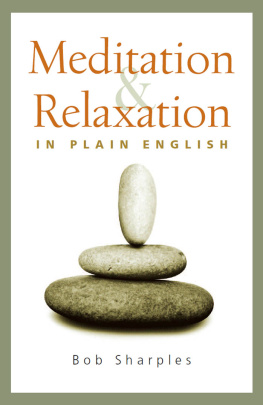





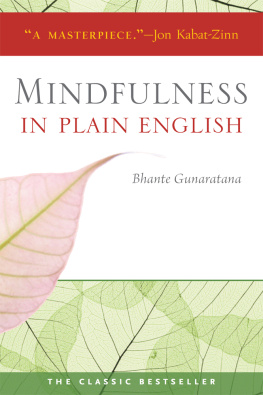
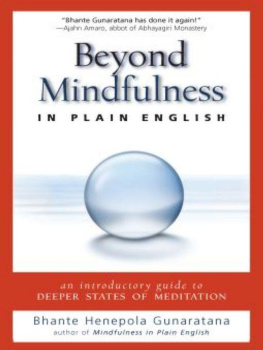
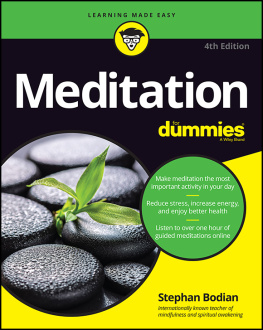
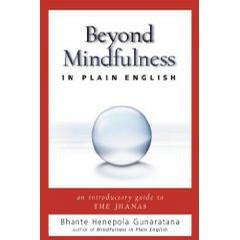

 This book was produced with environmental mindfulness.
This book was produced with environmental mindfulness.